[bannerTop]
Welcome to our Yahoo Search Redirect “Virus” removal guide. The following instructions will aid you in removing the unwanted software from your PC.
A new browser add-on named Yahoo Search Redirect has recently been disturbing a lot of users with its browser modifications. This application belongs to the Browser hijacker software category and has the ability to automatically change the default search engine or homepage in your Chrome, Firefox, Explorer or any other browser on your PC without asking for an approval. As per the reports that we have, Yahoo Search Redirect can be found in various types of web locations but mostly in free software bundles, free download links, torrents, spam email messages, ad-supported platforms and pop-up app download suggestions. It usually gets installed by the users when they download and install a given software setup bundle and don’t pay attention to the Advanced/Custom settings which may typically reveal the presence of the hijacker. If you have ended up with Yahoo Search Redirect this way, you’d probably like to know how to uninstall it and remove its annoying changes from your favorite browser in the most effective way. That’s why we recommend you remain on this page and take a look at the removal instructions that our “How to remove” team has prepared below. There, you will find screenshots and step-by-step guidelines as well as a professional Yahoo Search Redirect removal tool for additional removal assistance. Even though a Browser hijacker like this one is definitely not as dangerous and as problematic as a Ransomware or a Trojan horse virus, we advise you to carefully follow the instructions and get rid of the hijacker so that it can no longer mess with your browser and Internet settings.
Yahoo Search Redirect tries to mess with your browsing!
Altering the settings of your default browsing program is the first thing that a browser hijacker like Yahoo Search Redirect would do once it gets installed on the computer. The pesky application would normally try to install a new search engine tool or modify your homepage domain and/or new tab page in order to effectively perform automatic redirects to certain sponsored web locations. This is a very common online advertising tactic, employed by most Browser hijackers which aims to expose the web users to different ads and to promote certain products, platforms, services or software onto the users’ screens.
According to the most laws, such online advertising tactics are actually considered as harmless and, respectively, the software, related to it, is not seen as illegal. Moreover, most applications like Yahoo Search Redirect typically possess no harmful code and destructive or otherwise harmful abilities. The lack of harmful code makes them incapable of causing any direct damage but their ads generation and page-redirect services may still be a source of browsing disturbance, irritation and certain risks for your system.
What issues may Yahoo Search Redirect cause?
When Yahoo Search Redirect or a similar application is present on the computer, most of the users may not be able to surf the web normally. They are much more likely to experience sudden page redirects to different unfamiliar sites and promotional materials. Their search queries may be monitored by the hijacker and tied down to certain ads, banners, pop-up offers or similar aggressive sponsored messages. Oftentimes, clicking on these ads may seem like the only way to have them removed from the screen but this is not how we advise you to deal with the ads streaming.
Keep in mind that the hijacker usually streams its ads and sponsored links from different third-party platforms for Pay-Per-Click revenue. And while a lot of the offers might be legitimate, the reliability of all the content that hijackers generate cannot be guaranteed. Many cybercriminals, unfortunately, tend to take advantage of such randomly generated ads and insert fake or misleading links which might land you on completely different web pages than the ones that you actually think you’d get directed to clicking on an ad.
That’s why, if you do not want to have a close encounter with a nasty virus or a malware from the rank of Ransomware, Spyware or Trojan horses, it is best to avoid interacting with the content that applications like Yahoo Search Redirect may display. But since you may not be able to avoid all the automatic page redirects and sponsored search results all the time, the most reliable action is actually to uninstall this software completely. Fortunately, it doesn’t require any special skills to get rid of a Browser hijacker. That’s why, anyone who runs a scan of their system with a professional malware removal tool (such as the one on this page) or follows the instructions provided below can easily deal with it.
Yahoo Search Redirect “Virus” Removal
I – Safe mode and revealing hidden files
II – Uninstallation
[bannerMiddle]
- Use the Winkey+R keyboard combination, write Control Panel in the search field and hit enter.

- Go to Uninstall a program under Programs.

- Seek the unwanted software, select it and then click on Uninstall
If you are unable to spot Yahoo Search Redirect, search for any unrecognized programs that you do not remember installing on your PC – the unwanted software might disguise itself by going under a different name.
III – Cleaning all your browsers
- Go to your browser’s icon, right-click on it and select Properties.

- Go to the Shortcut tab and in the Target make sure to delete anything written after “.exe”.

- Now, open your browser and follow the instructions below depending on whether you are using Chrome, Mozilla or IE.
- Chrome users:
- Go to your browser’s main menu located in the top-right corner of the screen and select Settings.
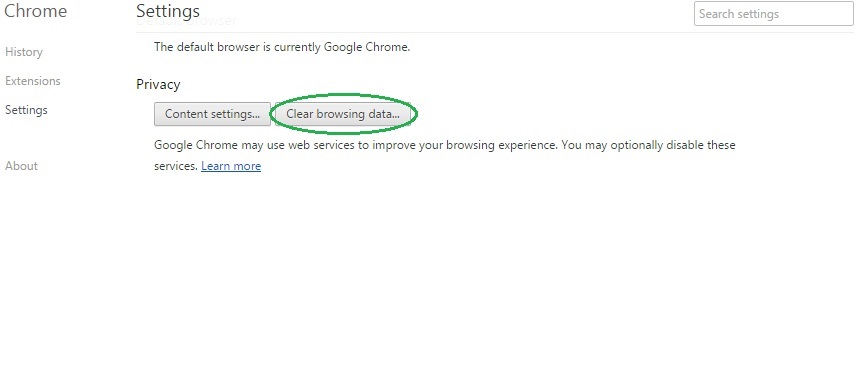
- Scroll down, click on Show Advanced Settings and then select Clear browsing data. Just to be sure, tick everything and clear the data.
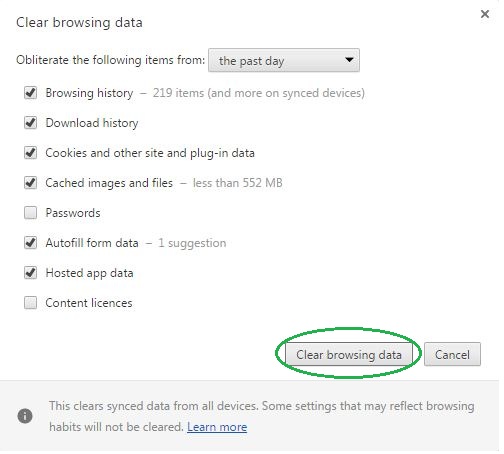
- Now, in the left pane, go to Extensions and look through all extensions that are integrated within your browser. If you notice any suspicious add-on, disable it and then remove it.
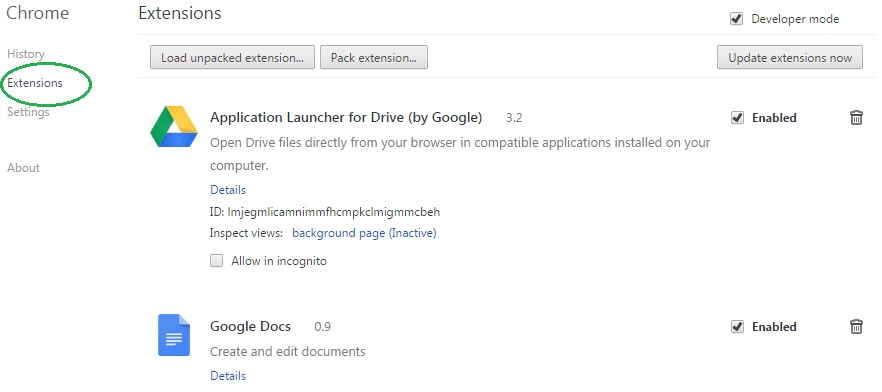
- Firefox users:
- Similarly to Chrome, go to the main menu and select Add-ons and then Extensions.
- Remove any suspicious browser extensions that you may have even if they do not have the name Yahoo Search Redirect on them.
- IE users:
- Go to Tools and select Manage add-ons.

- Click on all add-on types from the left pane and check if there is anything suspicious in the right panel. In case you find anything shade, make sure to remove it.
IV – Removing Shady processes
[bannerMiddleSecond]
- Go to your start menu, type Task Manager in the search field and from the results open View running processes with Task Manager.

- Thoroughly look through all processes. The name Yahoo Search Redirect might not be there, but if you notice any shady looking process that consumes high amounts of memory it might be ran by the unwanted program.
- If you spot the process ran by Yahoo Search Redirect, right-click on it, open its file location and delete everything in there. Then go back to the Task Manager and end the process.

V – DNS check
- In the start menu search box write View Network Connections and open the first result.
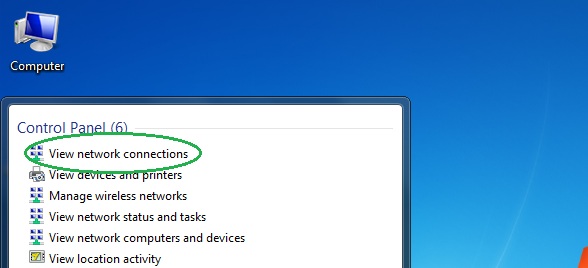
- Right-click on the network connection you are using and go to Properties.

- Select Internet Protocol Version (TCP/IPv4) and click on Properties.

- If Obtain DNS server addresses automatically is not checked, check it.
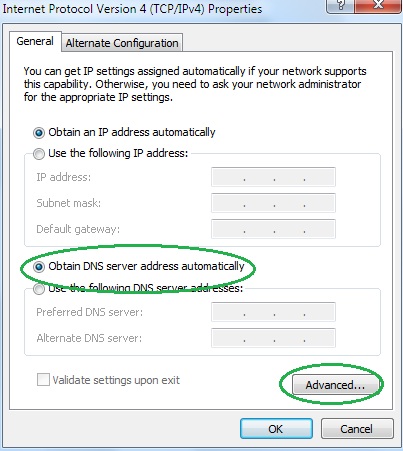
- Go to Advanced and select the DNS If there is anything in the DNS server addresses field, remove it and click OK.

- Click OK on the rest of the opened windows.





Leave a Reply